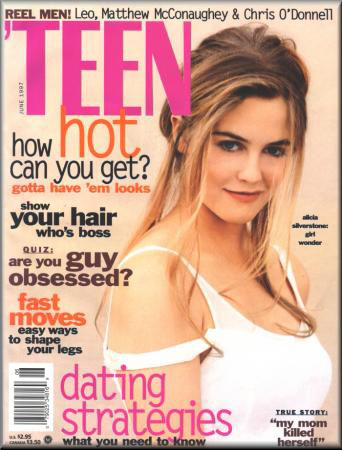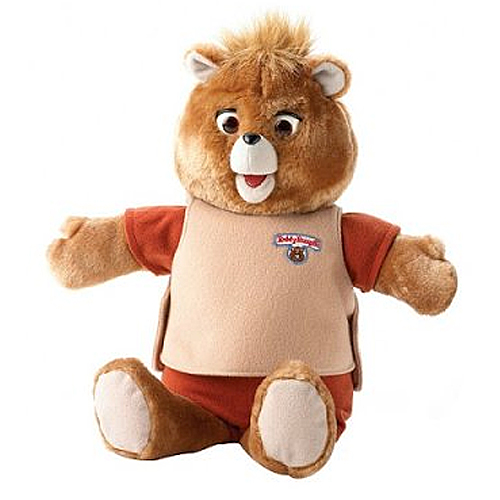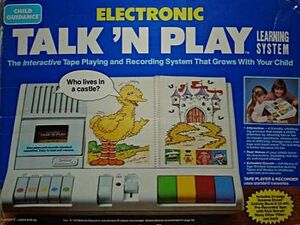
A quick perusal of 90s teen magazines leads us to a simple conclusion: publishers don’t have particularly high standards for their publications or expectations of their target demographic. Though arguably many magazines for grown women stoop to an equal level of insulting stupidity, teen magazines in their heyday functioned on the assumption that teenagers required a dumbed-down of grown up information. While perhaps an elevated level of discourse could have encouraged teenage girls to engage intelligently with their reading material, the general consensus was that they would rather read about their peer’s fake embarrassing moments.
That’s not to say all teen magazines featured solely vapid airhead-in-training material, but for every informed, timely article these publications featured more than their fair share of silliness. Whatever qualms feminists may have found with their content, one thing was certain: teen girls ate these up. Content was almost an afterthought; before the wane of printed publications in the 2000s, many of us were pretty happy to lap up whatever these magazines fed us. It may not have always been the most enlightened perspective, but they were arguably fun reads.
YM

Featuring standard columns like “Say Anything” and “It Happened to Me,” YM once held a major corner of the teen magazine market. “Say Anything” gave us allegedly true first-person account snippets of self-proclaimed most humiliating moments. For any of us who ever wrote in to the column with a group of our giggling friends, though, it was clear that the majority of these stories were completely made up. They always went a little something like, “and then this happened and then this happened, and if that weren’t enough, then I ended up doing this!” Like their Cosmo confession counterparts, most of these moments seemed just a bit too bad to have actually happened to anyone.
In the real life drama section, we all had a monthly opportunity to be frightened by some obscure disease or life event that was indubitably unlikely to happen to us. YM advised young girls on health, boys, and other pertinent topics, repackaging many of the same topics year after year and glossing them up with current fashions.
Seventeen

Seventeen supposedly catered to an older adolescent audience (the magazine’s name should tip you off on the target age range) but in reality, its allure was more powerful to young teens. Just the idea that we were reading a magazine catered to 17-year olds at the mere age of 13 made us feel powerfully mature and worldly. It wasn’t of course, but it felt exciting nonetheless.
Like YM, Seventeen featured embarrassing moments columns and advice articles, though perhaps its most favored features were its monthly quizzes. Even as 13-year olds, most of us were savvy enough to outsmart the quiz; until the mag got wise enough to ascribe specific point values to each answer varying by question, we were wise to their consistent A, B, and C answers throughout. It usually went something like this: A was over the top, B was just right, and C was glaringly deficient. Miraculously, we all came through with the just-right classification. Remarkable.
Teen

Completing the teen magazine market trifecta was Teen, holding a similar market share to and YM and Seventeen. In many respects, these publications were nearly indistinguishable from one another: they mostly featured the same tired advice columns, style news, and “real life” features. Their embarrassing moments section, “Why Me?” was essentially the same as YM’s “Say Anything” feature, though the similarities did not make the stories any less amusing. Teen did feature its fair share of personal essays entitled “True Stories from Real Teens,” which were occasionally informative but more often just gave all of us uninteresting readers out there hope that we too someday could be published within the hallowed pages of Teen.
Sassy

While a few of these magazines are no longer around, none seem to have left the same void in my life that accompanied the departure of Sassy. While it did cover many of the same issues as the other teen magazines on the market, Sassy often took a unique spin with an edgier feel. Unlike its teenybopperish peers, Sassy devoted space to indie musicians and feminist-minded ideals. When the mag was folded into Teen in the mid-90s, it took with it its adherence to all things outside of the mainstream. I held onto my Jane magazine subscription (created by Sassy editor Jane Pratt) for years hoping it would fulfill the Sassy-shaped hole in my life, but it was never quite the same.
Teen People

In 1998, Teen People started the wave of teen versions of popular grown-up magazines--following the teenification of people came Teen Elle, Teen Vogue, Cosmo Girl! and many more. While many of these adolescent magazines are now defunct--Teen People included--for a brief period following their debut there was a major buzz of excitement about these teen-specific editions of major magazines.
Like its grown-up counterpart Teen People featured stories about celebrities, though possibly less salaciously than typical People magazine coverage. Teen People premiered to high fanfare and adolescent excitement in 1998, but by 2006 People announced its teen publication would now be relegated to online articles. It seemed the market on celebrity news was remarkably oversaturated, particularly as most teens could find the dirt online for free. While it was a novel idea at its conception, Teen People failed to hold our long-term adolescent attention spans.
Tiger Beat/J-17/BOP

On the lower end of the teen magazine spectrum lay the glorified pinup publications. These magazines claimed to have articles, but for the most part they were stocked with fluffy interviews with teen stars accompanied by fold-out posters. It was by no means educational or informative by any stretch of the imagination, but it did encourage our mindless idle idol preoccupation.
If you’re looking to reminisce about kid’s magazines, check out this post--entirely devoted to children’s publications














